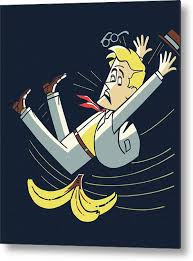TRANSITIONS
Why are Life Changes So Difficult?
Life changes. Everyone experiences life changes at all ages for a million different reasons. My fascination is around why is it so difficult? Why is there discomfort when we have a life change?
One book helped me understand life transitions. First published in 1980, Transitions, Making Sense of Life’s Changes by William Bridges PhD, has been updated and reprinted several times. The current iteration has been edited by the author’s wife, Susan Bridges, on behalf of the deceased author.  (Disclaimer: I neither know the authors nor do I have any financial interest in books sales. This is a book that helped me.)
(Disclaimer: I neither know the authors nor do I have any financial interest in books sales. This is a book that helped me.)
Dr. Bridges skillfully describes how we repeatedly experience life changes. In fact, we start having life changes from early life to our beginning of death. Infants are weaned and begin to each food when teeth show up. Children graduate one grade of school and start a new one that is more difficult than the prior one. Children work through puberty. Adolescents transitions into adults. Grown children leave home and go to college. Young adults begin jobs and learn to live independently. Parents become empty nesters. Men and women experience marriage, divorce, breakup, and death of a spouse. People start new jobs, get fired, retire, or quit. People are rocked by devastating medical diagnoses. People get injured in accidents and sometimes live with permanent disabilities. People win large sums of money from gambling. People develop addictions, and some go through recovery. The possibilities for change are endless!
So, if life changes are inevitable and ongoing, why do we strenuously resist change?
The author of Transitions breaks the process of change into three steps:
- Ending. We experience some type of ending. A job. A relationship. A particular chapter of life.
- Neutral Zone. A time for re-orientation. An awkward period of time that occurs between what has ended and what hasn’t yet begun.
- New Beginning. Individuals experience what is new. The transition has successfully occurred.
Sounds easy, right?
Consider a recent transition that the entire world was forced to experience. COVID-19, a pandemic beginning end of 2019. Normal lives ended for everyone. Lockdowns meant staying home with escalating fear about having enough food and supplies. Commuting to work ended. Going to school ended. Weddings, graduations, and other celebrations were cancelled. Sports ended. Music concerts ended. Cruise ships stopped cruising.
Without warning, people around the globe faced an ending—an ending to the normal way of life. According to Dr. Bridges, endings are step 1. Then comes step 2, disorientation. With the news of a rapidly spreading pandemic intensified by visual images of hospitals experiencing overload, bodies stacking up, ventilators pumping air into unconscious patients, stories of patients dying alone in hospital beds and assisted living facilities—the family locked out—people initially froze. We were shocked. Panicked. Disoriented. Our minds could not grasp the reality. How could this be happening? How long will it last? We were cut off from family, friends, and co-workers. Brave ones traveled out to grocery stores covered in masks, gloves, hats, face shields, and anything else they could cover up with.
 The confusing, in between period, persisted. The instructions and guidelines changed and changed again. People learned a new habit of putting on masks in public. Officials from the federal government, along with state and local officials, dispensed information with inconsistencies. State Governors made decisions for states that conflicted with other states.
The confusing, in between period, persisted. The instructions and guidelines changed and changed again. People learned a new habit of putting on masks in public. Officials from the federal government, along with state and local officials, dispensed information with inconsistencies. State Governors made decisions for states that conflicted with other states.
The period of disorientation, fear, and grieving for what was gone continued, but at some point, people started the adjustment period. Children began distance learning via computer while staying at home. Adults worked from home and engaged in Zoom meetings wearing perhaps pajamas from the waist down. Some businesses were forced to close while others thrived. Home delivery of products seemed to be a safer choice than leaving the home for shopping. Some people saw the opportunities related to being stuck at home. Puppies! Home renovation! No more figuring out what to wear to work! Less money spent on gasoline!
Step 3 occurred. New beginning. As people began to accept the pandemic and the new way of life as a new normal, we settled down. We hadn’t dined inside a restaurant, attended a concert, or traveled by plane to a vacation destination for so long, the desire sort of faded away. We began to miss the past activities less. Everyone, in their own way, settled into the new beginning. The transition occurred.
The COVID-19 pandemic example is extreme in terms of transition, but everyone experiences transition of different types. Transition can be devastating, pandemic or not. In the case of a spouse dying, the surviving spouse is hit with a definite ending. The spouse died. It is final. The death also brings many other endings. Loss of a partner, friend, lover. Loss of identity—someone’s wife or husband. Loss of activities. Loss of security, personal and financial. Loss of the home if moving is necessary. Dr. Bridges describes in his book that it is necessary for surviving spouses to endure the step 2, disorientation and reorganization, before considering the notion of starting a new relationship. If step 2 is skipped, the suppressed, unresolved emotions will appear in the next relationship which causes great challenges in having a healthy relationship with the new partner.
Some receive the diagnosis of Type II diabetes. Saying goodbye to sugar is an ending. Floundering while developing a new diet/lifestyle is awkward and uncomfortable. It’s not the same as before! How do we let go of habits and emotional connections that were formed as early as childhood? Our old friend, resistance, shows up to argue with us. Just give up! You know you love going out for ice cream! The battle continues until the chaos settles down and a new beginning occurs.
Resistance especially enjoys torturing us when it comes to job changes. Many are not happy and properly challenged in their current job. (See my blog article, Time, Energy, and Creativity) We may have entered a career that others told us we’d be perfect for. Maybe an engineer had always dreamed of being a teacher. Maybe a teacher had always dreamed of being a photographer. Perhaps we hang in there at a job we dislike because of the short commute, pay, benefits, etc. Some experience resistance after being blessed with a wonderful promotion. Are you really management material? You’re going to miss your old team of co-workers. Remember how much you enjoyed talking about your weekend with Larry? And what about your Wednesday lunches with the gang? You might fail in that new position, and then you’ll be humiliated! Just hang on to what you know so well. Retirement isn’t that far away.
Transitions helped me to work through life changes. When my children grew up and left our home. When I went through my divorce. The distressing step 2, disorientation and reorganization was brutal! But the information in the book helped me to recognize the phase I was in, and I was able to see death and the hope of regeneration around me. For example, one day I was sitting in my car after work, crying. The pain of divorce was wholly crushing me. I looked out the window and saw fall leaves separating from branches, floating slowly to the cold ground, crunchy and shriveled. The trees reminded me that endings happen every year for them. Yet, come spring, there is tremendous regeneration, new buds, new leaves strong and full. I felt comforted. I knew that I would  regenerate and transition to the new life ahead—whatever that may be.
regenerate and transition to the new life ahead—whatever that may be.
Dr. Bridges says, “Think of transition as a process of leaving the status quo, living for a while in a fertile time-out, and then coming back with an answer.”

